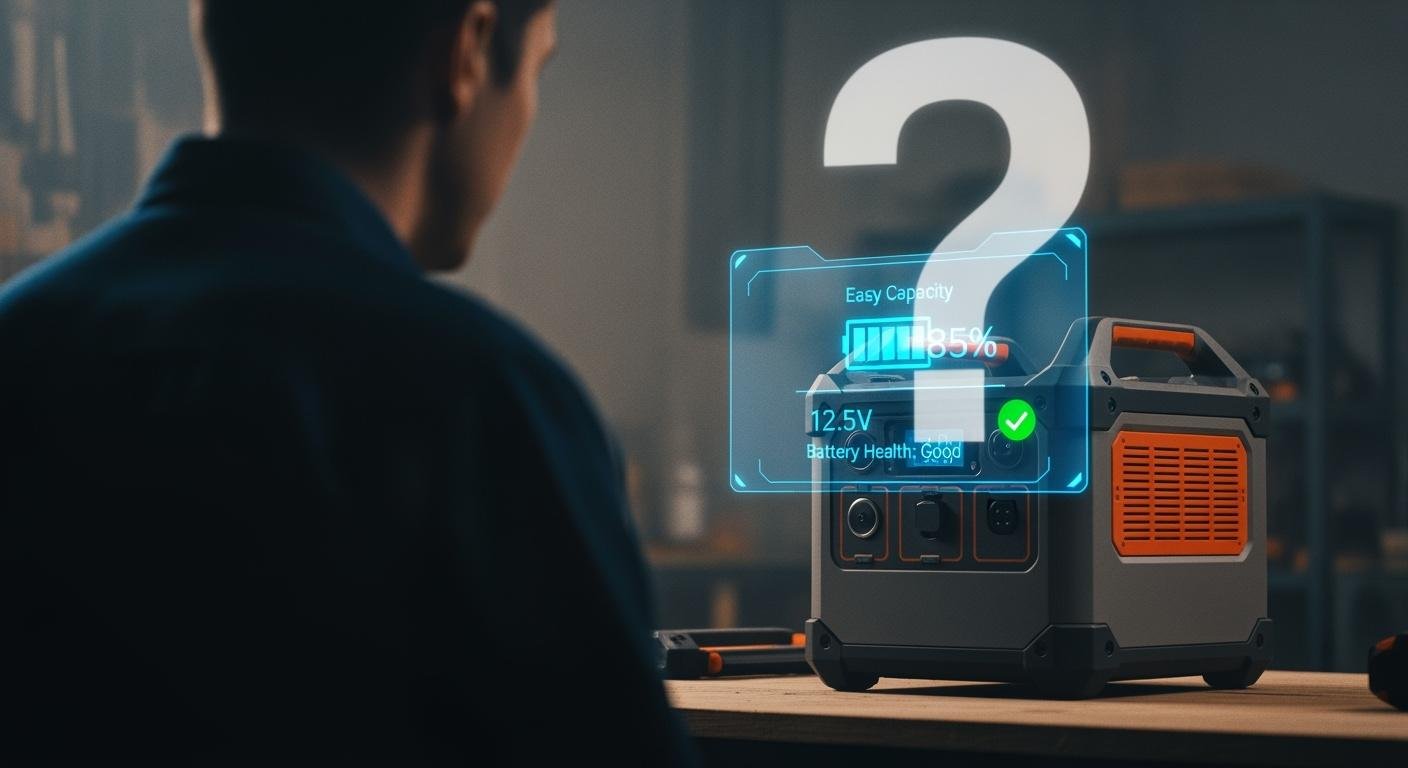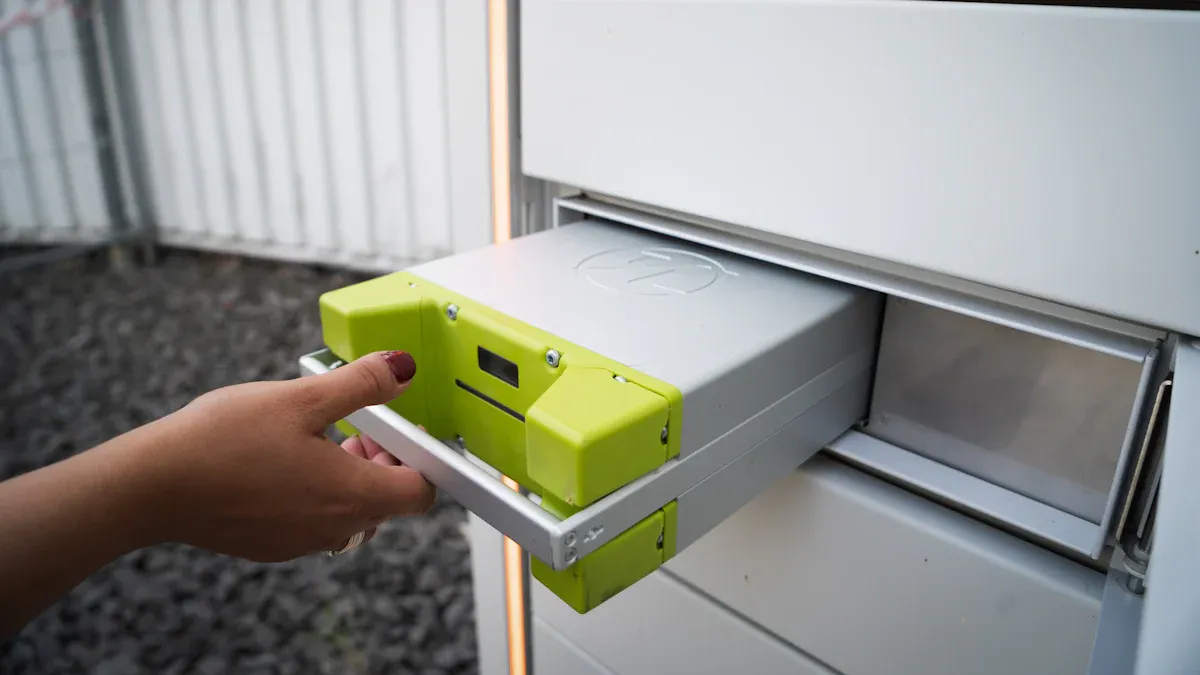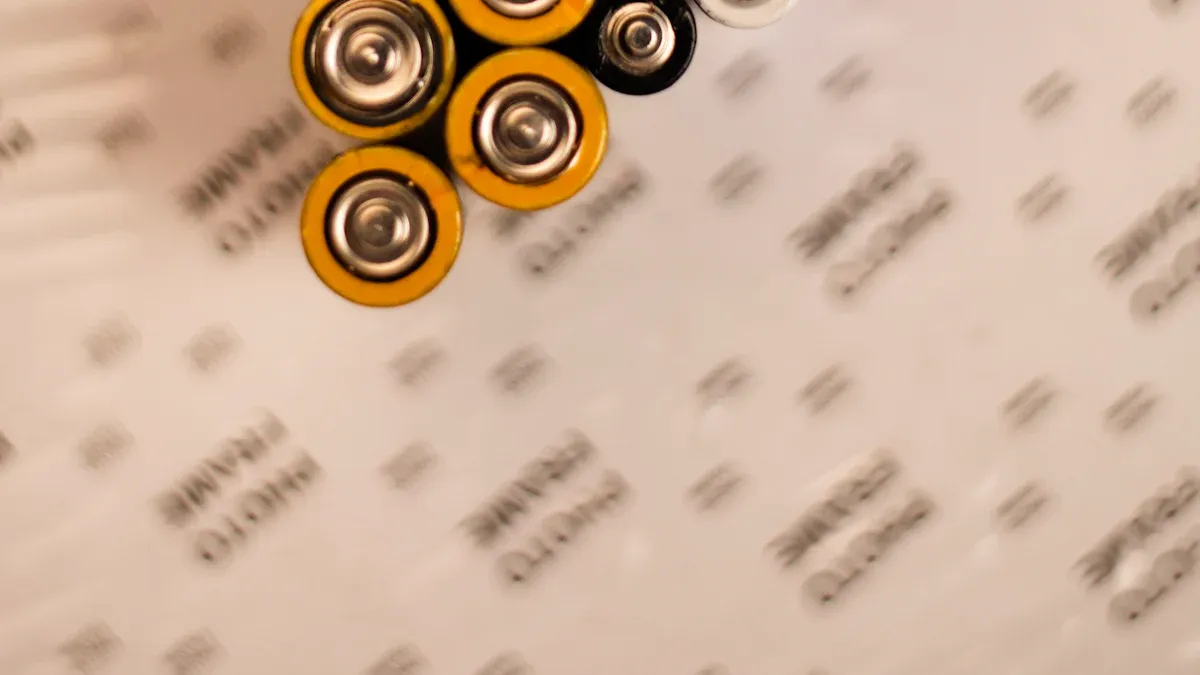
You need reliable power for your portable power stations. The best battery type for this job is Lithium Iron Phosphate (LiFePO4). This battery type offers significant advantages for your power needs.
- It provides superior safety for peace of mind.
- The battery has a much longer lifespan.
- You get excellent value over time.
Understanding this battery technology helps you choose the right outdoor power stations. You can feel confident in your power source. This knowledge empowers your purchase.
LiFePO4: The Gold Standard Battery

When you look inside high-quality portable power stations, you will often find a LiFePO4 battery. This battery type sets the industry standard for good reasons. It delivers an unmatched combination of long lifespan, safety, and steady performance. Understanding these benefits shows you why LiFePO4 is the smart choice for your power needs.
Exceptional Lifespan and Value
You want an investment that lasts. A LiFePO4 battery offers a truly exceptional lifespan. This battery gives you over 2,500 to 3,500 full charge cycles before its capacity drops. Other common lithium-ion batteries, like NMC, only provide 500 to 800 cycles. With daily charging, a typical lithium-ion battery might last two to three years. A LiFePO4 battery gives you many more years of reliable service.
This long lifespan translates directly to better value. While the initial cost might be slightly higher, the cost per charge cycle is significantly lower. The price per cycle for a LiFePO4 battery is often just one-third of that for an NCM battery. You get long lasting performance that saves you money over time. This makes LiFePO4 the most economical choice for reliable power sources.
Superior Safety and Stability
Your safety is the top priority. LiFePO4 chemistry is fundamentally more stable and safer than other lithium-ion types. The main risk with batteries is “thermal runaway,” a dangerous overheating process that can lead to fire. The iron phosphate material in a LiFePO4 battery is incredibly resistant to this. It can handle higher temperatures without breaking down.
Did You Know? Some battery types, like NCA, can enter thermal runaway at around 150°C (302°F). LiFePO4 batteries have a much higher threshold, making them far safer for use in your home, vehicle, or around your family.
Top brands ensure their outdoor power stations meet strict safety standards. Look for certifications that test for thermal stability.
- UL 1642/2054: Standards for lithium and household batteries.
- IEC/UL 62133-2: Specific safety requirements for portable lithium systems.
These certifications confirm the battery has passed rigorous tests for overcharging, short-circuits, and thermal stress.
Consistent Power and Performance
A LiFePO4 battery delivers steady and dependable power. It maintains a more constant voltage during discharge. This means your devices get consistent power from a full charge down to empty, ensuring better performance and extended runtime. This is crucial for sensitive electronics.
To maximize your battery lifespan, you should manage its Depth of Discharge (DoD). For LiFePO4, it is best to operate the battery between 20% and 80% of its capacity. This practice prevents stress on the battery cells and ensures a very long lifespan. This battery technology also excels in various environments, making it perfect for outdoor applications and solar charging. Whether you need fast charging or a steady solar trickle charge, this battery handles it with ease. Its wide operating temperature range ensures reliable power in both hot and cold conditions.
| Feature | LiFePO4 Batteries | Other Lithium-Ion Batteries (e.g., NMC) |
|---|---|---|
| Operating Temp. | -4°F to 140°F (-20°C to 60°C) | 14°F to 122°F (-10°C to 50°C) |
| Stability | High, reliable in harsh weather | Best in moderate climates |
| Ideal Use | Outdoor, solar, temperature changes | Indoor, climate-controlled spaces |
This robust performance, combined with its excellent portability and battery size-to-power ratio, makes LiFePO4 the superior battery for nearly all uses. The charging speed and high energy density complete the package for a top-tier power solution.
Comparing the Main Battery Type Options

You need to understand the different battery types to make a smart choice. While LiFePO4 is the top recommendation, other options exist. Knowing their weaknesses helps you see why LiFePO4 is superior for your portable power stations.
Lithium-Ion (NMC/NCA)
You will often find Lithium Nickel Manganese Cobalt Oxide (NMC) or Lithium Nickel Cobalt Aluminum Oxide (NCA) batteries in some devices. These battery types are known for their high energy density. This means they can store more power in a smaller, lighter package, which improves portability. However, this advantage comes with serious trade-offs in safety and lifespan.
The cobalt-based chemistry of NMC and NCA batteries is less stable. This makes them more likely to experience thermal runaway, a dangerous process where the battery overheats and can catch fire.
- NCA batteries have a lower overall safety margin.
- Tests show an NMC battery can reach over 550°C (1022°F) when damaged, triggering a chain reaction.
- The chemical bonds in this battery type are weaker, making them less stable and more prone to fire.
This lower stability is a significant concern for a device you use in your home, vehicle, or around family. Their shorter lifespan of 500-800 cycles also means you will need to replace the unit much sooner, reducing its long-term value.
Lead-Acid (AGM/SLA)
You might see lead-acid batteries, like Absorbed Glass Mat (AGM) or Sealed Lead Acid (SLA), in older power systems. This is an outdated technology for modern outdoor power stations. Their biggest drawback is their extreme weight and poor energy density.
| Battery Type | Energy Density (Wh/kg) |
|---|---|
| Lead-Acid | 30 – 40 |
| LiFePO4 | 110 – 250 |
A LiFePO4 battery is often 55% lighter than a lead-acid battery of the same capacity. This massive weight difference makes lead-acid a poor choice for any mobile applications. Beyond weight, lead-acid batteries pose environmental risks.
| Feature | Lead-Acid Batteries | LiFePO4 Batteries |
|---|---|---|
| Toxic Materials | Contains toxic lead and corrosive sulfuric acid. | Does not contain hazardous heavy metals. |
| Environmental Risk | Improper disposal contaminates soil and water. | Materials are less toxic and safer for the environment. |
This battery type also delivers poor performance. You can typically only use about 50% of its stated capacity without causing damage, which limits its effective runtime.
Why LiFePO4 is the Top Choice
When you compare the options, LiFePO4 stands out as the clear winner for reliability, safety, and value. Experts in the off-grid and solar energy fields recommend it for its consistent and dependable power.
When you choose LiFePO4, you’re really choosing long-term reliability. Its stable chemistry doesn’t just prevent safety issues; it also delivers consistent performance across a wider range of temperatures—a critical factor for off-grid homes in climates that see real heat and cold.
The long-term advantages become obvious when you look at the numbers. A LiFePO4 battery provides more usable power and a much longer lifespan, making it ideal for solar charging and demanding use.
| Feature | LiFePO4 (Lithium Iron Phosphate) | Lead-Acid (High-Quality) |
|---|---|---|
| Cycle Life | 3,000 to 5,000+ cycles | 500 to 1,000 cycles |
| Usable Capacity (DoD) | 90-100% | ~50% |
| Round-Trip Efficiency | 95% or higher | 80-85% |
This chart visually summarizes why LiFePO4 is the superior choice. You get more power, higher efficiency, and a dramatically longer-lasting battery.

Choosing a LiFePO4 battery for your outdoor power stations ensures you have a safe, durable, and efficient power source for years to come. It is the smart investment for all your solar and portable power needs.
Key Factors for Portable Power Stations
When you choose between portable power stations, you must look at more than just the brand name. The battery type inside determines its weight, lifespan, and overall value. This simple comparison will help you understand the key differences and make a confident choice for your power needs.
Weight, Capacity, and Portability
You need a balance of power and portability for your outdoor power stations. The battery’s energy density plays a huge role here. NMC batteries have a slightly higher energy density, meaning they can be a bit lighter for the same capacity. However, this small advantage comes at the cost of safety and battery lifespan. LiFePO4 batteries offer excellent power in a manageable battery size, making them ideal for most applications. Lead-acid is not a practical choice due to its extreme weight.
Lifespan in Charge Cycles
The lifespan of a battery is measured in charge cycles.
A charge cycle is one full discharge from 100% to 0% and recharge back to 100%. This can happen in one go or over several partial charging sessions.
LiFePO4 batteries deliver a remarkable 3,000+ cycles while retaining most of their original capacity. In contrast, an NMC battery degrades much faster, often losing significant capacity after just 1,000 cycles. This long lifespan makes LiFePO4 perfect for demanding uses like daily solar charging.
Initial Cost vs. Long-Term Value
You should think about the total cost over the battery’s life. While some LiFePO4 portable power stations may have a slightly higher upfront price, their cost per cycle is much lower. The superior performance and long lifespan provide far better long-term value. Manufacturers show their confidence in this technology with longer warranties. LiFePO4 units often come with a 5-year warranty, while NMC models typically offer only 1-3 years. This makes the LiFePO4 battery a smarter investment for your portable power supplies.
| Feature | LiFePO4 (Recommended) | Lithium-Ion (NMC/NCA) | Lead-Acid (AGM/SLA) |
|---|---|---|---|
| Lifespan (Cycles) | 3,000 – 5,000+ | 500 – 1,000 | 300 – 500 |
| Safety | Highest | Moderate (Risk of thermal runaway) | Low (Contains lead and acid) |
| Weight & Portability | Very Good | Excellent (Slightly lighter) | Poor (Extremely heavy) |
| Long-Term Value | Excellent | Poor | Very Poor |
| Usable Capacity | 90-100% | 80-90% | ~50% |
This table clearly shows why a LiFePO4 battery is the top choice for your outdoor power stations, delivering unmatched safety, longevity, and value.
For your portable power stations, the LiFePO4 battery is the clear choice for a long lifespan and safe power. You avoid the poor performance of another battery type and the low energy density that hurts portability. The market is moving toward modular designs, making your initial choice of battery size and capacity vital for future power upgrades like solar power.
When buying your next outdoor power stations, check the specifications. Insist on the LiFePO4 type to protect your investment and ensure reliable power for a long runtime after every solar charging session. This battery ensures a better lifespan and power performance.
FAQ
Why is a LiFePO4 battery better for my power station?
You get superior safety and a much longer lifespan. This battery type provides thousands of charging cycles. It delivers consistent power for your devices. This makes it a smarter, more reliable investment for your long-term power needs.
Can I use solar charging with any power station?
Yes, you can use solar charging with most modern units. LiFePO4 is excellent for solar energy collection. It handles the variable power from solar panels efficiently. This ensures you get reliable power from the sun for all your needs.
Are LiFePO4 power stations much heavier?
They are slightly heavier than some models due to lower energy density. However, this small weight difference is a worthy trade-off. You gain immense benefits in safety and lifespan, giving you more dependable power for years to come.
How do I make my solar power station last longer?
You can extend its life with good habits. Avoid draining the power completely.
Pro Tip: Try to keep the charge between 20% and 80%. This simple practice reduces stress on the cells and maximizes your unit’s lifespan for reliable solar power.

